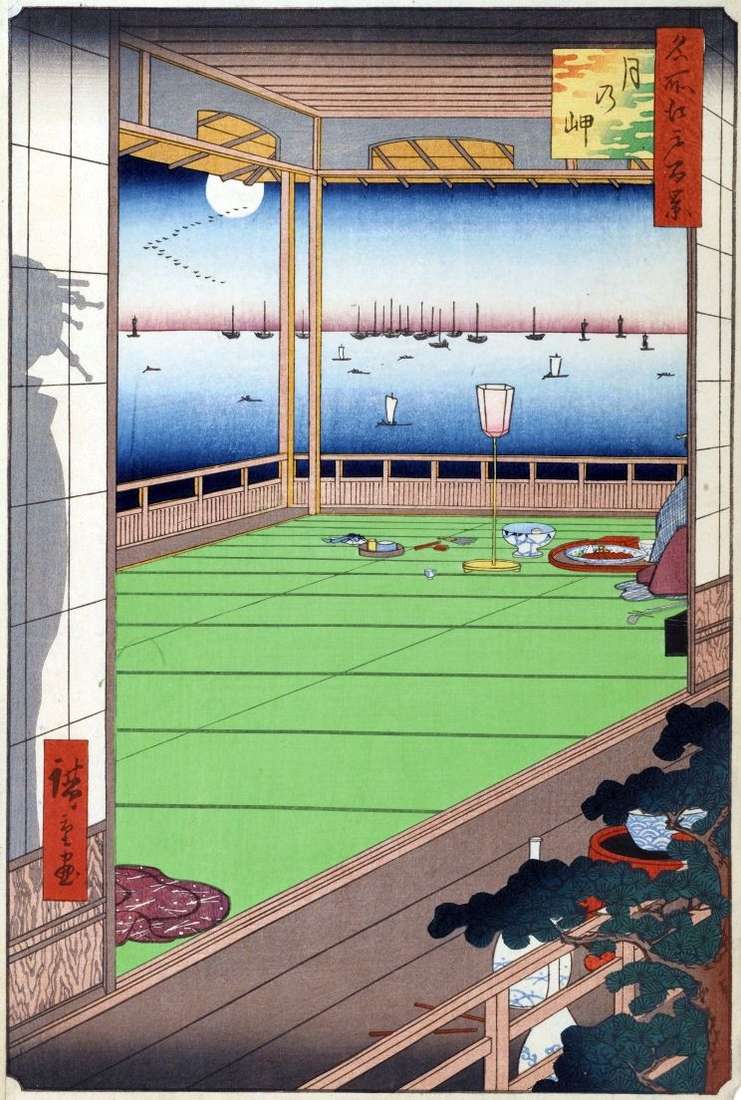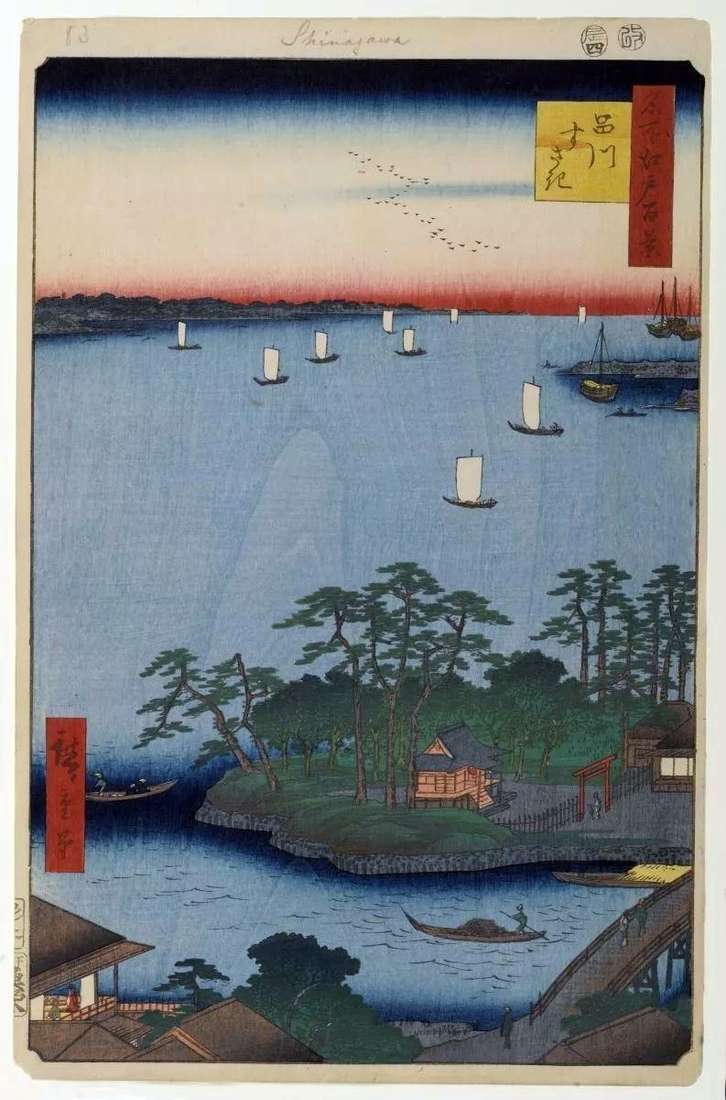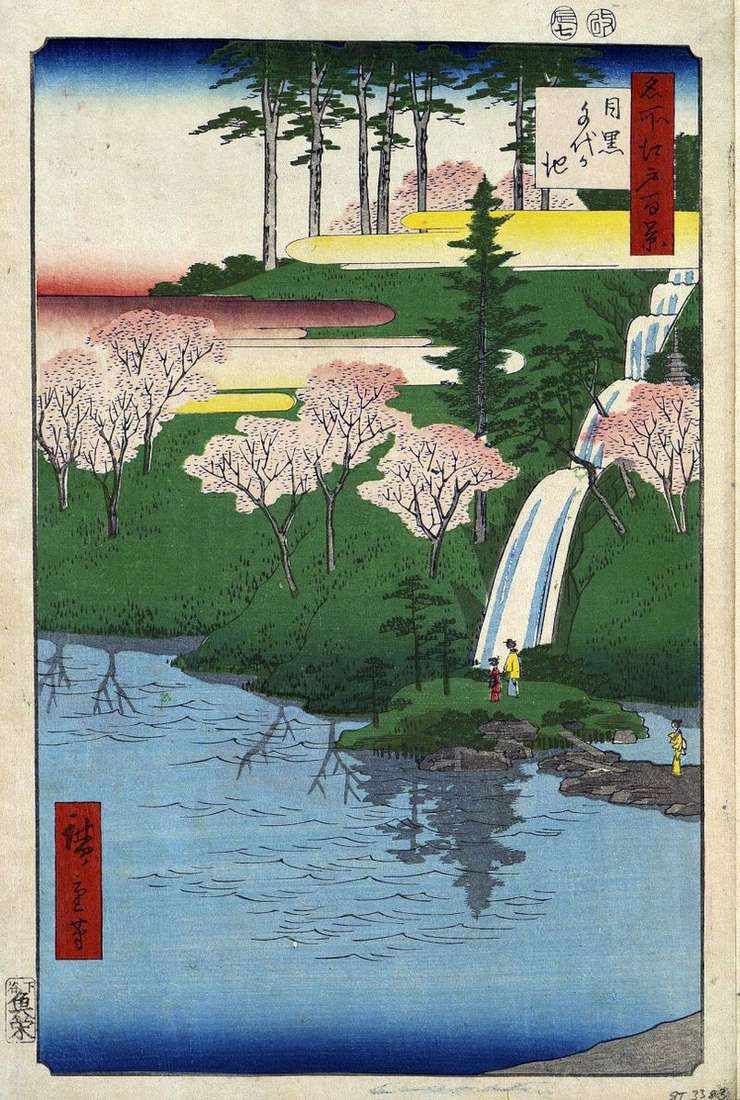
This engraving is among the few in the series in which accurate terrain determination is impossible. The view of the Edo Gulf plays a secondary role in engraving, the author’s main attention is focused on the interior of the tea house. On tatami, next to the lamp, a large lacquer tray with a dish in which the remains of a festive meal are visible.
On the other side of the lamp is a fan and there is a small tray with a pouch and a tube. In the right bottom corner you can see two porcelain bottles from under sake. Near the floor are two chopsticks – Hasi. The guests just parted, in the right-hand corner above the edge of the kimono of a geisha, invited to play on the shamisen, next to the edge of his neck and case. On the septum, the shadow of a woman, most likely, judging by the number of kandzashi studs in her hair, is a courtesan-yudze.
Geishas in the days of Hiroshige traditionally wore an odd number of hairpins in their hair. The moon illuminates the seascape with boats. Perhaps the tea house was on the border of Takanava and Sinagawa on Mount Yayuyama. Despite the great decorative effect of late engraving, the original version is distinguished by the harmony of the combination of color shades and high level of printing.
 Embankment Koumae by Utagawa Hiroshige
Embankment Koumae by Utagawa Hiroshige Moon pine on the territory of the monastery in Ueno by Utagawa Hiroshige
Moon pine on the territory of the monastery in Ueno by Utagawa Hiroshige The moon over the cape by Ando Hiroshige
The moon over the cape by Ando Hiroshige Sifting in Susaki by Utagawa Hiroshige
Sifting in Susaki by Utagawa Hiroshige Sanctuary Motohatiman in Sunamura by Utagawa Hiroshige
Sanctuary Motohatiman in Sunamura by Utagawa Hiroshige Protocols to Mitsumata. Vakare-nofunti by Utagawa Hiroshige
Protocols to Mitsumata. Vakare-nofunti by Utagawa Hiroshige Atagoshita, Yabukoji Street by Utagawa Hiroshige
Atagoshita, Yabukoji Street by Utagawa Hiroshige Meguro, pond Tiegaike by Utagawa Hiroshige
Meguro, pond Tiegaike by Utagawa Hiroshige